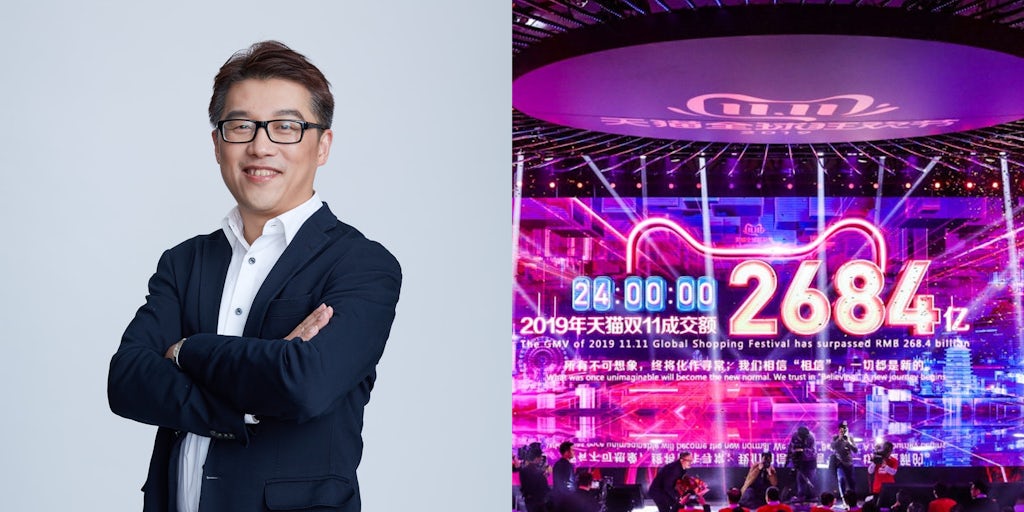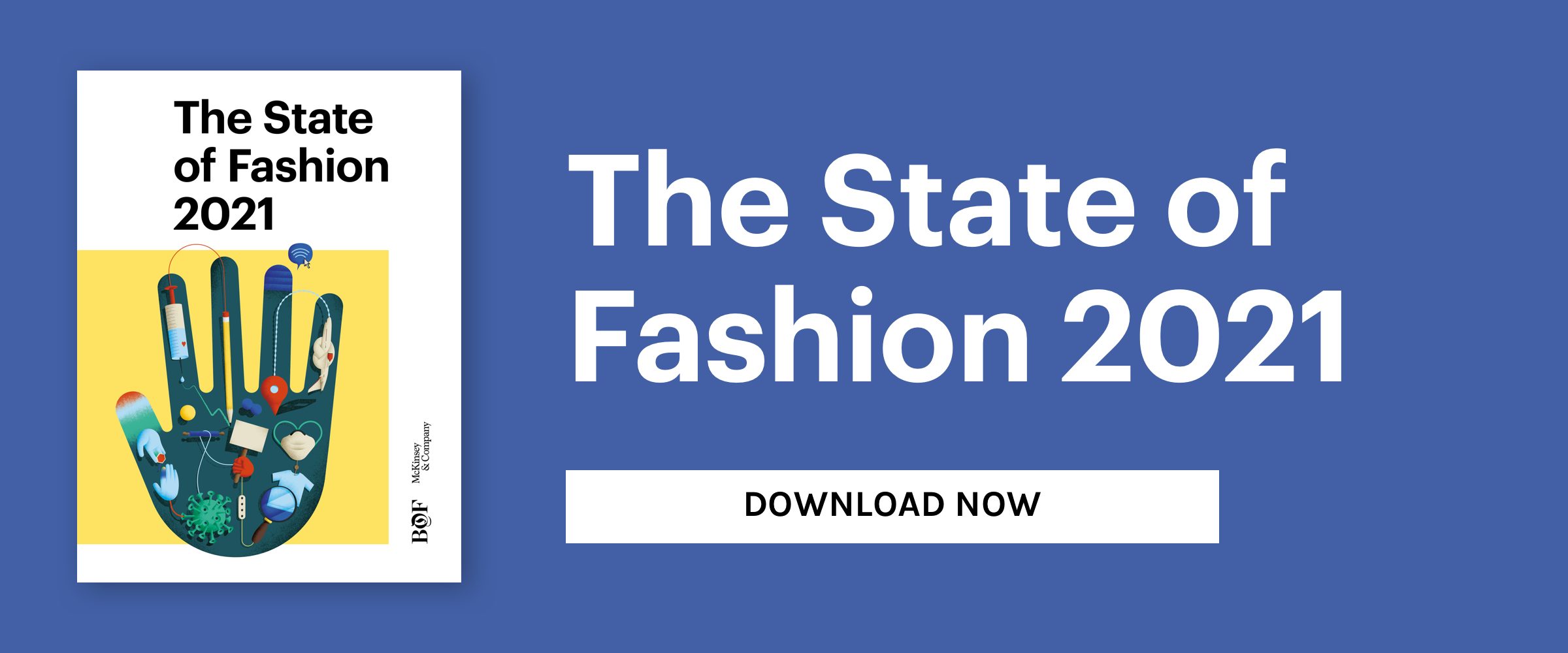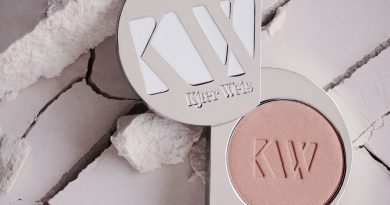Alibaba’s Mike Hu on ‘Three-Dimensional’ Retail | BoF Professional, News & Analysis
This article appeared first in The State of Fashion 2021, an in-depth report on the global fashion industry, co-published by BoF and McKinsey & Company. To learn more and download a copy of the report, click here.
China was the first major global economy to return to substantial growth following a record contraction in 2020. Malls have since reopened in cities from Beijing to Wuhan and — with global travel at a standstill — home-bound luxury shoppers have been spending more than ever in the mainland. A lot of this activity is online, much to the benefit of major players like Alibaba-owned Tmall, which unveiled a new outlet channel Luxury Soho to complement Luxury Pavilion, its core sub-platform that works with almost 200 luxury and designer brand partners.
Though the rivalry between Tmall and JD.com continues to dominate China’s fashion e-commerce market, both face growing competition from smaller upstarts. But Mike Hu is not worried. The executive in charge of luxury, fashion and FMCG at Tmall says the firm’s wealth of consumer data and suite of tailored tech innovations like livestreaming will keep it on track to meet some of its lofty targets next year.
BoF: During the widespread outbreak in the mainland in January 2020, there must have been a lot of uncertainty within Alibaba Group — as with all Chinese companies — about business prospects for 2020. But we’ve since witnessed China’s strong economic rebound from Covid-19. How do you assess Tmall’s recovery since then?
Mike Hu: Since the pandemic we’ve seen some very obvious phenomena. The first is that because a lot of people can’t leave the country, they’re shopping more domestically. As early as July, online sales of luxury products were already back to pre-pandemic levels. Second, we’ve seen luxury brands accelerate their digital transformations. For example, an increasing number of brands have chosen to open flagship stores on Tmall. More and more brands are now positioning Tmall as their second official website [in China]. Third, we’ve seen more brands start to use Tmall to reach consumers from lower-tier cities. Brands may slow down their expansion of physical stores offline, given the uncertainty of the pandemic, but they can leverage Tmall to approach consumers in [cities that are not first- or second-tier].
BoF: We’ve been hearing about the growth of China’s lower-tier city consumption power for quite some time. How significant will this be next year for online channels in the post-pandemic market environment in categories such as luxury, for example?
MH: Luxury brands are especially interested in discussing with us about how and whether Tmall can reach fourth- and fifth-tier cities now. We think livestreaming is very important in this regard. Currently, around 60 percent of our livestreaming audience is from lower-tier cities.
BoF: Tmall has spent many years courting international brands. Now that we are living with the virus and the global economic reality it has created, do you see any remaining hesitation on the part of luxury brands to embrace new digital innovations in China’s unique ecosystem?
MH: A more digital way of doing business is now essential for luxury brands, because at the heart of their business, they care about the experience of the customer. This is Alibaba’s obvious strength. We research people’s preferences and explore new styles and new brands for them. We’re shifting to more of a customer to business (C2B) model; this is a huge change. This means that we see [things through the lens of the] customer and we don’t just focus on whether he or she buys something. We closely observe their behaviours, interests, likes, scrolling, attention, interest, purchasing and loyalty — we can see all sides clearly. In China, we call this strategy gong zhen (strategic resonance); brands and Tmall move in tandem in order to develop a common language and find the right way forward in the market.
Over the next two years we hope to increase the number of luxury brand flagship stores on Tmall by more than 100 percent annually.
BoF: The outlook for global luxury consumption remains uncertain, meaning major high-end brands will be relying on Chinese sales more than ever. What are your expectations and plans for Tmall’s fashion, beauty and luxury categories over the next year?
MH: Over the next two years we hope to increase the number of luxury brand flagship stores on Tmall by more than 100 percent annually. This is a goal we believe will be easy to achieve given the current trajectory. First, we want to cultivate consumers’ online shopping habits. After all, offline shops have limitations. This new generation is the Wi-Fi generation so [we need to ask ourselves], “How do we use Tmall to give them new products and more specialised products?” Additionally, we are in an age of content. How do we use short videos and livestreaming to help luxury brands reach more users? Over the next few years, we need to engage in deeper discussions with the big groups — LVMH, Kering and Richemont — about our three-dimensional model of online and [physical] retail. We are not only focused on digital growth: we would also like to make offline stores a more interactive, elevated experience. This would involve cooperating on many fronts, from content to social media to B2C to supply chains and consumer behaviour.
BoF: What about smaller brands?
MH: We hope to add more niche brands to our platform — labels that may be well-known in their home markets and have a long history but remain unknown to Chinese consumers. Take the Italian luxury brand GCDS, which launched its Tmall store in August. Also, how should brands with 50 years of history but that are new to our market engage with Chinese shoppers? We’re trying to find ways to accelerate their journey and find success here.
BoF: Covid-19 has fundamentally changed the way people shop on a global level. Can the same be said of Chinese shopping habits and the way consumers engage with online marketplaces, such as Tmall? How will the pandemic impact future consumption trends in China?
MH: The pandemic has had a limited impact on high-net-worth individuals as they have a higher risk tolerance. Younger consumers and especially those from lower- tier cities, however, have been affected. In the future, I believe consumers will be more cautious in their spending and show more interest in low-cost products. In other words, the wallet share of consumers from lower-tier cities will [eventually] decrease. Meanwhile, we are also seeing an increase in consumption for household goods. Short-distance travel has also gained in popularity. Given this, we are putting emphasis on domestic consumption scenarios and are paying attention to categories that have the potential to sell well.
BoF: Brands will continue to jostle for Chinese customer engagement in an increasingly crowded market. How can Tmall help brands reach Chinese consumers in new ways in 2021?
MH: Every year we develop a joint business development plan with these groups and develop projects, products and solutions for their needs. Estée Lauder [Companies], for example, has been with us for four or five years exclusively — they don’t want to sell through too many channels as this makes it hard to control pricing and promotions. Burberry and Cartier follow the same exclusive partnership model. We have a whole package that helps brands target commodity management, memberships and [related] services. Different brands have different sales models and therefore require different solutions.
BoF: What will be the next big technological advance that Tmall focuses on? Will the livestreaming boom of this year carry on in 2021?
MH: We’re really confident about the prospects of livestreaming, particularly as an interactive tool for young consumers. But its characteristics will change. There will be a greater diversity of broadcasters. Today, it’s mostly KOLs [influencers known locally as Key Opinion Leaders], celebrities and sometimes executives of companies that use livestreaming to sell products — this mix is likely to broaden in the future. During this year’s 6.18 Mid-Year Shopping Festival, around 40 percent of livestreams were hosted by big brands. This percentage is expected to grow to 70 to 80 percent during the upcoming 11.11 Shopping Festival. By next year’s 6.18 Shopping Festival, we expect that even more brands will host their own livestreaming shows. Finally, we also see a new trend among luxury brands of using short videos to mix with livestreaming to further secure the quality of visual content while connecting with their consumers.
This interview has been edited and condensed.




